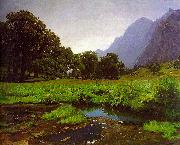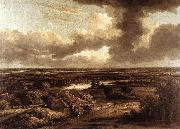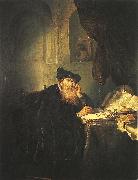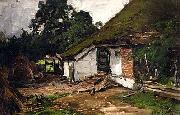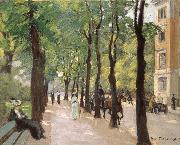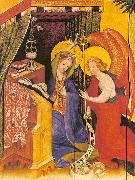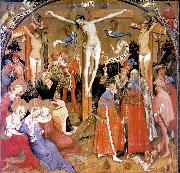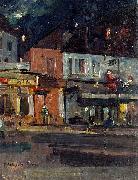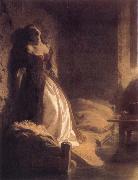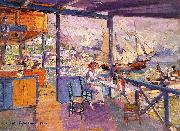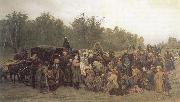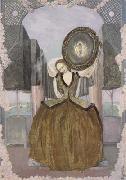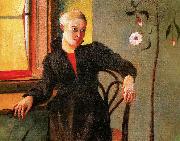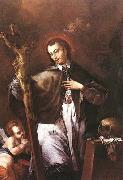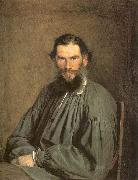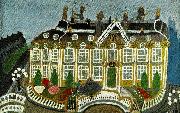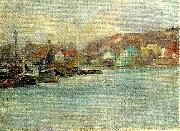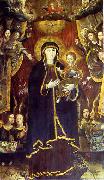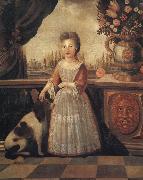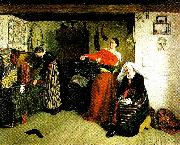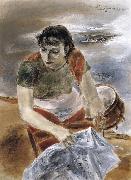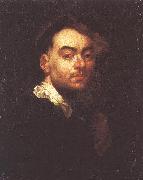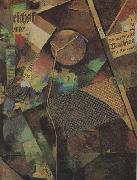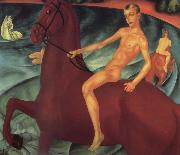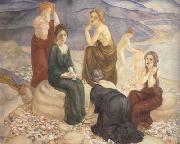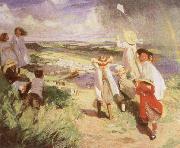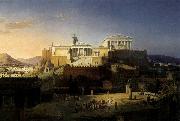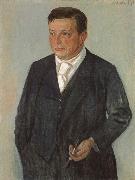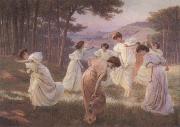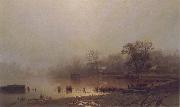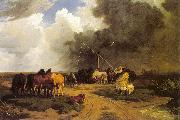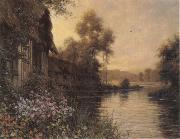|
|
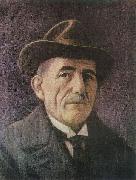 |
Kole Idromeno
|
|
Kolë Idromeno (1860-1939) was an Albanian painter, sculptor, photographer, architect and engineer.
He was born in Shkodër, where he learned the first elements of photography from Pietro Marubi. In 1876 he stayed for some months at the Academy of Fine Arts in Venice (Accademia di Belle Arti di Venezia), and then worked in the studio of an Italian painter. When back in Albania (1878), he engaged himself in a number of different activities, working as an architect, sculptor, photographer, scene-painter, engineer and painter. He was the initiator of the first art exhibition in Shkodër (1923) and was represented in the first national art exhibition in Tirana (1931).
He established a very active photographic studio. Idromeno was the first painter to show motion pictures in Albania in 1912. He had kept up a correspondence with the Lumiere brothers in Paris. |
|
|
|
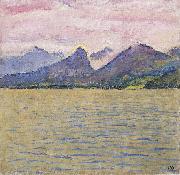 |
Koloman Moser
|
|
Koloman Moser (German pronunciation: [ˈkoːloman ˈmoːzɐ]) (March 30, 1868 - October 18, 1918) was an Austrian artist who exerted considerable influence on twentieth-century graphic art and one of the foremost artists of the Vienna Secession movement and a co-founder of Wiener Werkstätte.
During his life, Moser designed a wide array of art works - books and graphic works from postage stamps to magazine vignettes; fashion; stained glass windows, porcelains and ceramics, blown glass, tableware, silver, jewelry, and furniture - to name a few of his interests.
Born in Vienna, he studied at the Wiener Akademie and the Kunstgewerbeschule, where he also taught from 1899.
His designs in architecture, furniture, jewelry, graphics, and tapestries helped characterize the work of this era. Moser drew upon the clean lines and repetitive motifs of classical Greek and Roman art and architecture in reaction to the Baroque decadence of his turn-of-the-century Viennese surroundings.
In 1901/1902, he published a portfolio titled Die Quelle ("The Source") of elegant graphic designs for such things as tapestries, fabrics, and wallpaper.
In 1903, Moser and his colleague Josef Hoffmann founded Wiener Werkstätte, whose studios and artisans produced a number of aesthetically and functionally designed household goods, including glassware, flatware, silverware, and textiles. In 1904, he created the Apse mosaic and glass windows for the Kirche am Steinhof in Vienna.
Steinhof Church commemorative coin
In 1905, together with the Klimt group, he separated from the Vienna Secession. The same year, he married Editha (Ditha) Mautner von Markhof, the daughter to one of Austria's great industry fortunes.
In 1907 Kolo Moser, due to internal conflicts and as his plans for reorganising the Werkstätte (to cope with financial problems) weren't realised, withdrew from the Wiener Werkstätte.
Koloman was one of the designers for Austria's leading art journal Ver Sacrum. This art journal paid great attention to design and was designed mainly by Moser, Gustav Klimt and Josef Hoffmann.
|
|
|
|
|
|
|
|
|
|
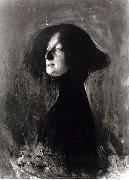 |
Konrad Krzyzanowski
|
|
(1872-1922) was a Polish painter of powerful expressionist landscapes and vivid portraits, born in Kremenchuk in Ukraine. His art studies began in Kiev and were continued in St. Petersburg and Munich. In Warsaw he was a professor at the School of Fine Arts. He took his students for summer open - air sessions around Poland and to Lithuania and Finland. His seascapes were painted mostly in Finland. His works are mentioned briefly in a review of a show of "Independents" at the Royal Albert Hall, published in The New Age.Krzyżanowski died in Warsaw.
|
|
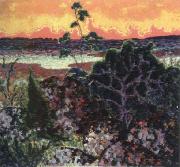 |
konrad magi
|
|
konrad magi(1878 to 1925),was an Estonian landscape painter. He was one of the most colour-sensitive Estonian painters of the first decades of the 20th century, and Magi works on motives of the island of Saaremaa are the first modern Estonian nature paintings.
Magi received his elementary art education from the drawing courses of the German Artisans Society of Tartu (1899?C1902.) At the same time, he was keenly engaged in theater, violin, and various sports.
Magi continued his art education as an unattached student in Saint Petersburg (1903?C1905.) In the autumn of 1907, he went to Paris. There Magi studied at a free academy. From 1908 to 1910, he lived in Norway. In 1912, Magi returned to Tartu, where he worked as an art teacher.
In Åland, he created delicate plant vignettes in the style of Art Nouveau: Kahekesi (Two together; 1908; China ink drawing). In Paris, Magi was influenced by Impressionism and Fauvism, which had a significant impact on his colours: Lilleline vali majakesega (A flower field with a little house; 1908?C1909), Norra maastik manniga (A Norwegian landscape with a pine; 1910).
From 1918, the influence of Expressionism is manifest, fostered by Mägi extreme sensitivity and emotional response to the anxious times: Puhajarv (Lake Puha, ', ', ', ', ', ', ', '); 1918?C1920), Otepaa maastik (Landscape of Otepaa; 1918?C1920). Also influenced by Expressionism are his big figure compositions Piet?? (1919), Kolgata (Golgatha; 1921).
Konrad Magi - Rannamaastik (Beach landscape)Magi new artistic period, begun on a trip to Italy, brought calmer tempers: Varemed Capril (Ruins in Capri; 1922?C1923). Along with nature pictures, he painted flowers and portraits. Magi mostly beautiful female models express the Art Nouveau ideal of beauty: Holsti (1916). In his later portraits from the 1920s, a more serious temper is expressed: Madonna (1923?C1924).
|
|
|
|
|
|
|
|
|
|
|
|
|
|
 |
Konstantin Makovsky
|
|
1839 September 17 [O.S. September 30] 1915) was an influential Russian painter, affiliated with the "Peredvizhniki (Wanderers)". Many of his historical paintings, such as The Russian Bride's Attire (1889), showed an idealized view of Russian life of prior centuries. He is often considered a representative of a Salon art.
Konstantin was born in Moscow as the older son of a Russian art figure and amateur painter, Yegor Ivanovich Makovsky. Yegor Makovsky was the founder of Natural class, the art school that later became as the famous Moscow School of Painting, Sculpture and Architecture. Among the friends of the family were Karl Briullov and Vasily Tropinin. All children of Yegor became notable painters (see Makovsky). Later Konstantin wrote For what I became I think I should thank not the Academy or Professors but only my father.
In 1851 Konstantin entered the Moscow School of Painting, Sculpture and Architecture where he became the top student, easily getting all the available awards. |
|
|
|
|
|
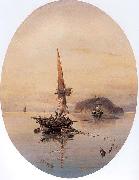 |
Konstantinos Volanakis
|
|
(Greek, b. Heraklion, Crete, 1837- d. 29 June 1907) was a Greek painter, considered one of the best of the 19th century. Born to a wealthy family, he went to Trieste, Italy, in 1856 where he took up painting. He studied in the Munich Academy. He is one of the foremost representatives of the Munich School, a Greek artistic movement of the 19th century. Michalis Oikonomou, another Greek painter, was one of his pupils.
He died in 1907. His works are today exhibited in major museums in Greece and abroad.
|
|
|
|
|
|
|
|
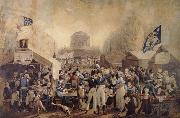 |
Krimmel John
|
|
American portrait and genre painter.
b.1789 d.1821
|
|
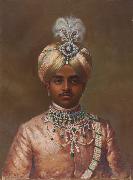 |
Krishna Raja Wadiyar IV
|
|
Krishna Raja Wadiyar IV (June 4, 1884 - August 3, 1940, Bangalore Palace), also known popularly as Nalwadi Krishna Raja Wadiyar was the ruling Maharaja of the princely state of Mysore from 1902 until his death in 1940. He is regarded as one of the most celebrated rulers among the Indian States when India was still under British rule. At the time of his death, he was also one of the world's wealthiest men, with a personal fortune estimated in 1940 to be worth $400 million which would be equivalent to $56 billion in 2010 prices.
|
|
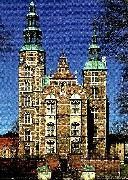 |
kristian
|
|
kristian foddes den 12 april 1577 och blev kung av danmark som elvaaring 1588. |
|
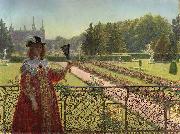 |
Kristian Zahrtmann
|
|
(31 March 1843 - 22 June 1917) was a Danish painter. He was a part of the Danish artistic generation in the late 19th century, along with Peder Severin Krøyer and Theodor Esbern Philipsen, who broke away from both the strictures of traditional Academicism and the heritage of the Golden Age of Danish Painting, in favor of naturalism and realism.
He was known especially for his history paintings, and especially those depicting strong, tragic, legendary women in Danish history. He also produced works of many other genres including landscapes, street scenes, folk scenes and portraits.
He had a far-reaching effect on the development of Danish art through his effective support of individual style among his students during the many years he taught, and by his pioneering use of color.
|
|
|
|
|
|
|
|
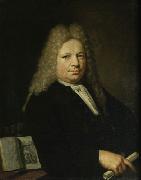 |
Krzysztof Lubieniecki
|
|
(1659-1729) was a Polish Baroque painter and engraver active in Amsterdam during the Dutch Golden Age.
Krzysztof was born in Szczecin. He and his brother Teodor Lubieniecki hailed from an Arian family. They learned to paint from Juriaan Stur in Hamburg. In 1667 they travelled to Amsterdam, where Krzysztof apprenticed with Adriaen Backer, and Teodor with Gerard de Lairesse. In 1682, Teodor moved to Hannover before eventually moving to Poland in 1706, where he died.
Krzysztof remained in Amsterdam, where he painted portraits and genre pieces. He also collaborated on prints for Jacobus Houbraken, Daniel Willink, and Johannes Brandt (son of Gerard Brandt). He died in Amsterdam.
|
|
|
|
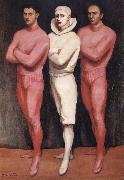 |
Kuhn Walt
|
|
American cartoonist and painter,
1877-1949 |
|
|
|
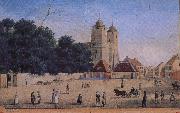 |
kulturen
|
|
ivar johnssons byst av georg karlin, karv i uppsyn som originalet., bares upp au en tung granitplatta med orden forntid framtid. det var det motto karlin helt i nutidsanda satt for sitt museum samlingarna sklle lara om det forgangna inspirera till det kommande. |
|
|
|
|
|
|
|
|
|
|
|
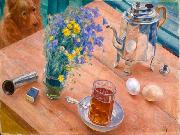 |
Kuzma Sergeevich Petrov-Vodkin
|
|
(1878, Khvalynsk, now Saratov OblasteFebruary 15, 1939, Leningrad) was an important Russian and Soviet painter and writer.
Kuzma Petrov-Vodkin was born in Khvalynsk (Saratov Oblast) into the family of a local shoemaker. His first exposure to art was in his early childhood, when he took some lessons from a couple of icon painters and a signmaker. Still, Petrov-Vodkin didn't quite see himself in art at that time; after graduating from middle school, he took a summer job at a small shipyard with plans to get into railroad college in Samara. After failing his exam, he turned to "Art Classes of Fedor Burov" in 1893.
In April 1895, Burov died and for some time Petrov-Vodkin took different painting jobs in the vicinity of Saratov. By chance, his mother's employer invited a well-known architect, R. Meltzer. Petrov-Vodkin was introduced to the guest and impressed him enough to get an invitation to study art at Saint Petersburg. The education was financed by a charitable subscription among local merchants. He also met at this time Borisov-Musatov, an important painter resident in Saratov, who encouraged Petrov-Vodkin to continue his studies.
Petrov-Vodkin stayed in Saint Petersburg from 1895 to 1897 studying at the Baron Stieglits School, before moving to the Moscow School of Painting, Sculpture and Architecture. There Petrov-Vodkin was a student of Valentin Serov, Isaak Levitan and especially Konstantin Korovin. In 1901 he travelled to Munich to take classes with Anton Ažbe.
He graduated in 1904.
|
|
|
|
|
|
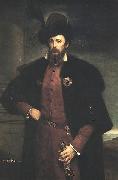 |
Leon Kaplinski
|
|
(1824-1873) was a Polish painter and political activist.
Born 1824 in Lisew not far from Warsaw, Leon was the son of a small landowner and an eminent freemason Jan Kaplieski. The Kaplieskis were a Frankist family; his grandfather Eliasz Adam Kaplieski was one of the last known Frankists. Leon Kaplieski studied law and philosophy in Warsaw and Wrocław (Breslau). He was engaged in revolutionary underground groups, fled from the part of Poland under Russian rule, was briefly held and interrogated by the Prussian police, and took part in the revolutionary movement in 1848. In the same year Kaplieski emigrated to Paris where he spent most of his remaining years. He took part in Polish emigre political activities, closely connected with the circle of Hotel Lambert and the Czartoryski family, accompanied the Count Witold Czartoryski during his trip to the Balkans and the Near East. Kaplieski also edited the periodical Ephemerides Polonaises. He was married to Helena Hryniewiecka. In 1871 he moved back to Poland, living mostly in Krakew, and died in 1873 in Milosław. He befriended several well-known Polish artists and writers, including Henryk Rodakowski, Jan Matejka, and Cyprian Kamil Norwid.
Kaplieski studied art in Poland and later in Paris. His first known works are copies of paintings by famous Italian artists; later he became known and appreciated for his patriotic historical paintings as Wernyhora (1855). His best works are portraits: of his mother Julia (1860), the writer Bohdan Zaleski (1857), Count Adam Jerzy Czartoryski (about 1860), and an autoportrait as a Templar (about 1872). Many of his paintings and other works have perished or been lost. Mainly influenced by classical Italian art and his contemporary Rodakowski, L.K. continued the tradition of academic painting and had no interest for the emerging modernist tendencies of the mid-nineteenth century. He won some recognition in France, participating in the Paris art salons. L.K. wrote some poems and a short novel Nad Wisłą (On Wisla).
|
|
|
|
|
|
|
|
|
|
|
|
|
|
 |
ludvig karsten
|
|
(Ludvig Peter Karsten), född 8 maj 1876 i Oslo, död 19 oktober 1926 i Paris, var en norsk målare. Han räknas som en av de viktigaste efterföljarna till Edvard Munch och räknades som en ledande impressionist. |
|
|








